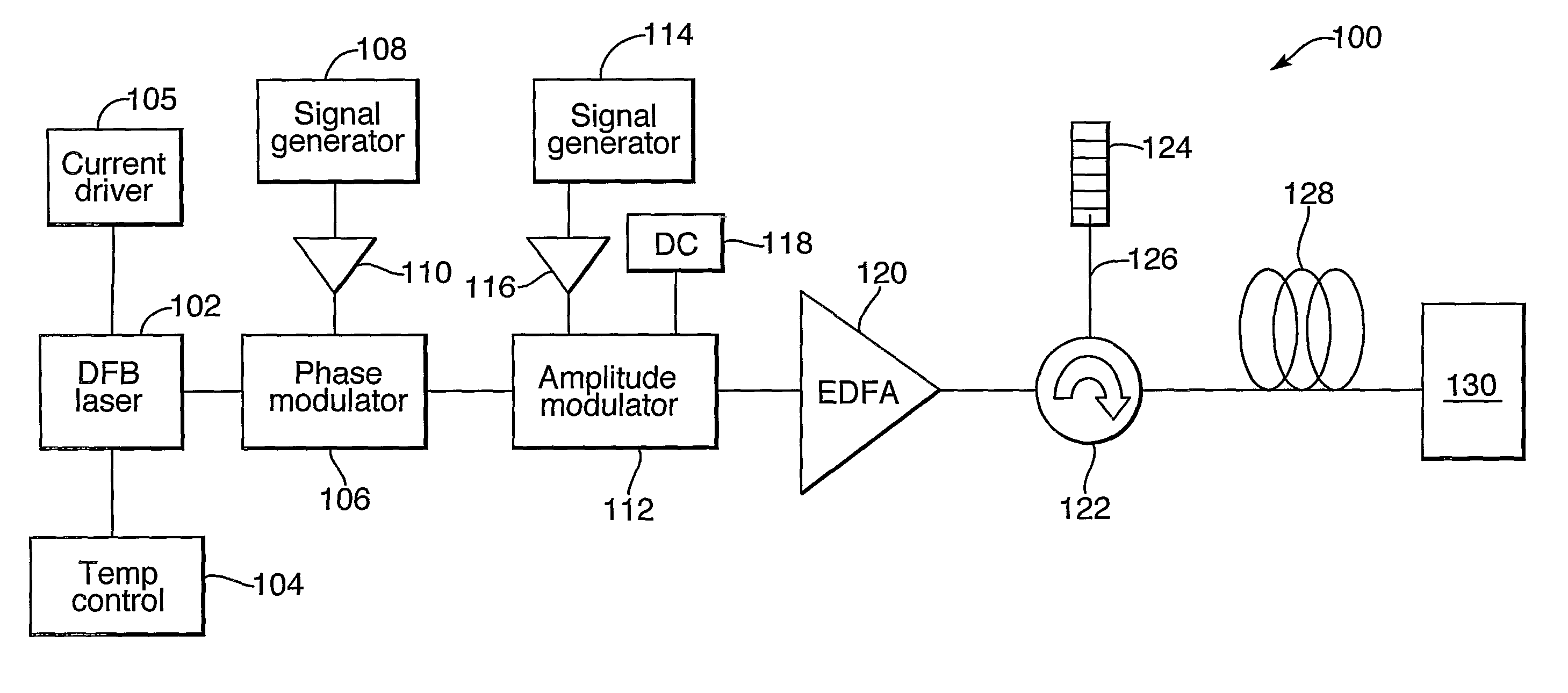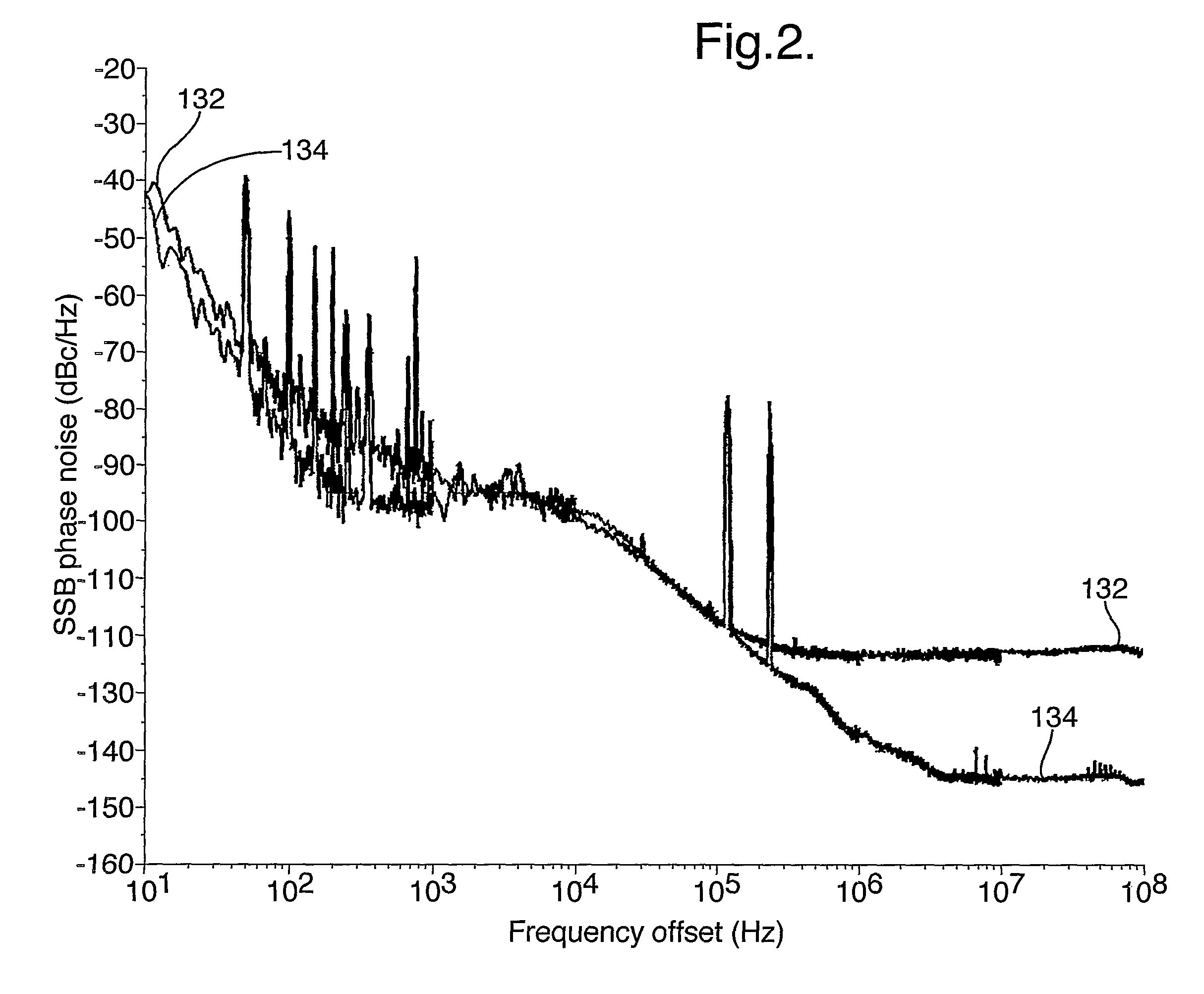Optical clock
a technology of optical clocks and pulses, applied in optics, instruments, electromagnetic transmission, etc., can solve the problems of inconvenient operation, high physical complexity of clocks, and inability to meet the needs of practical applications outside the laboratory, so as to reduce frequency-noise and time-jitter in optical clock pulses
- Summary
- Abstract
- Description
- Claims
- Application Information
AI Technical Summary
Benefits of technology
Problems solved by technology
Method used
Image
Examples
Embodiment Construction
[0025]In FIG. 1, an optical clock 100 of the invention comprises a DFB laser oscillator 102 which is temperature-stabilised by a temperature-controller 104 to stabilise the output wavelength of the DFB laser 102. Output from the DFB laser 102 passes to a phase-modulator 106 and then to a push / pull-type amplitude-modulator 112. Modulators 106, 112 are standard devices, based on gallium arsenide for example, and are driven by signal generators 108, 114 the output signals of which are amplified by amplifiers 110, 116 before being applied to the modulators 106, 112. Signal generator 114 is an HP® model 83711A. A DC supply 118 provides a DC bias to the amplitude-modulator 112. Optical output from the amplitude-modulator 112 is in the form of a series of optical pulses which are amplified by an erbium-doped fibre-amplifier (EDFA) 120 and input to an optical fibre 128 via a circulator 122 which is coupled to a Bragg grating 124 by a short length of optical fibre 126. The optical fibre 128 ...
PUM
| Property | Measurement | Unit |
|---|---|---|
| length | aaaaa | aaaaa |
| frequency | aaaaa | aaaaa |
| frequency | aaaaa | aaaaa |
Abstract
Description
Claims
Application Information
 Login to View More
Login to View More - R&D
- Intellectual Property
- Life Sciences
- Materials
- Tech Scout
- Unparalleled Data Quality
- Higher Quality Content
- 60% Fewer Hallucinations
Browse by: Latest US Patents, China's latest patents, Technical Efficacy Thesaurus, Application Domain, Technology Topic, Popular Technical Reports.
© 2025 PatSnap. All rights reserved.Legal|Privacy policy|Modern Slavery Act Transparency Statement|Sitemap|About US| Contact US: help@patsnap.com



